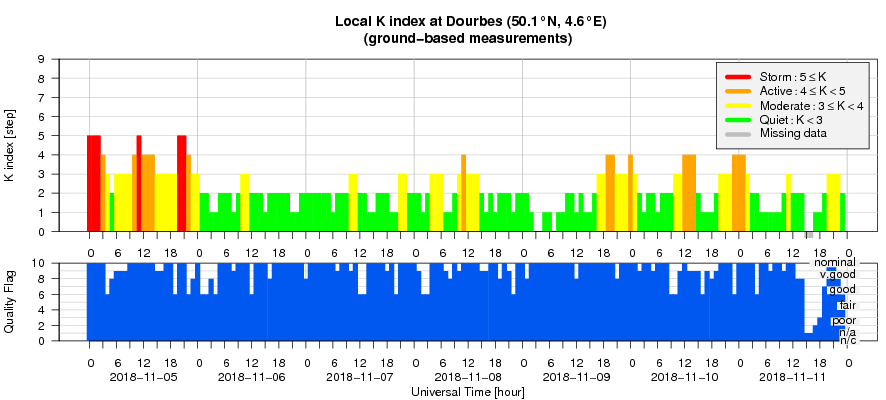- Table of Content
- 1.Cruising the s...
- 2.ESWW15
- 3.PROBA2 Observa...
- 4.The SIDC space...
- 5.The Internatio...
- 6.Geomagnetic Ob...
- 7.Review of iono...
2. ESWW15
3. PROBA2 Observations (5 Nov 2018 - 11 Nov 2018)
4. The SIDC space weather Briefing
5. The International Sunspot Number
6. Geomagnetic Observations at Dourbes (5 Nov 2018 - 11 Nov 2018)
7. Review of ionospheric activity (5 Nov 2018 - 11 Nov 2018)
Cruising the solar cycle minimum
According to the preliminary sunspot numbers from SILSO (http://sidc.oma.be/silso/ ), the Sun has been spotless from 22 October till 8 November. This period of 18 days is the longest spotless stretch so far this solar cycle transit. It's still much lower than the 32 days during the previous solar cycle transit, when the Sun was immaculate from 31 July till 31 August 2009 (See the "Spotless Days" page at http://sidc.oma.be/silso/spotless and this STCE Newsitem at http://www.stce.be/news/432/welcome.html ).
The end of the spotless stretch came from a small spot that appeared in the northern hemisphere. It had a latitude of +26 degrees and the correct magnetic polarity of the new solar cycle (SC25). Unfortunately, it didn't receive a NOAA number, making it similar to some other, much tinier, groups earlier this year (see http://www.stce.be/news/422/welcome.html for a similar case). From late on 11 November onwards, there was a somewhat larger sunspot region at latitude +6 degrees near the disk centre. NOAA 2726 belonged to the old solar cycle (SC24), as can be seen from its magnetic polarity which is opposite to that of the unnumbered group. The images underneath were created with JHelioviewer (http://www.jhelioviewer.org/ ) from SDO/HMI pictures (https://sdo.gsfc.nasa.gov/ ).
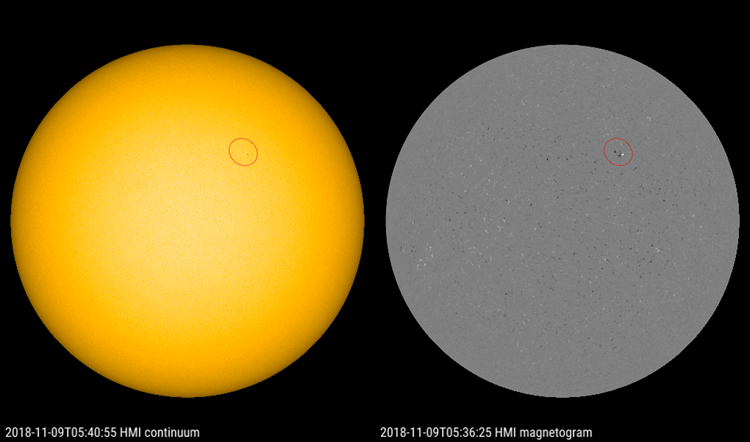
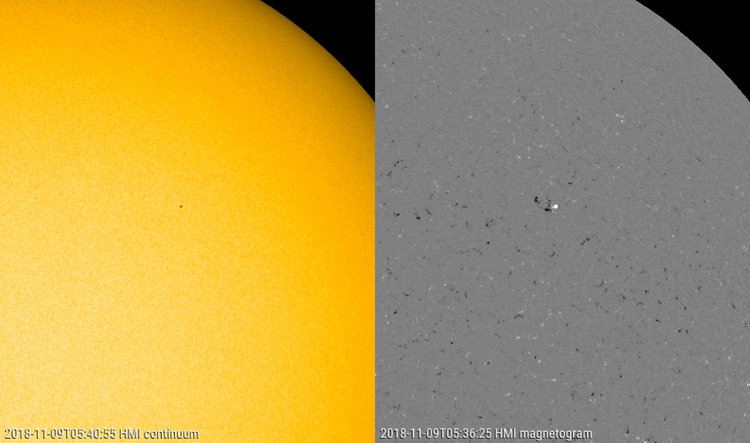
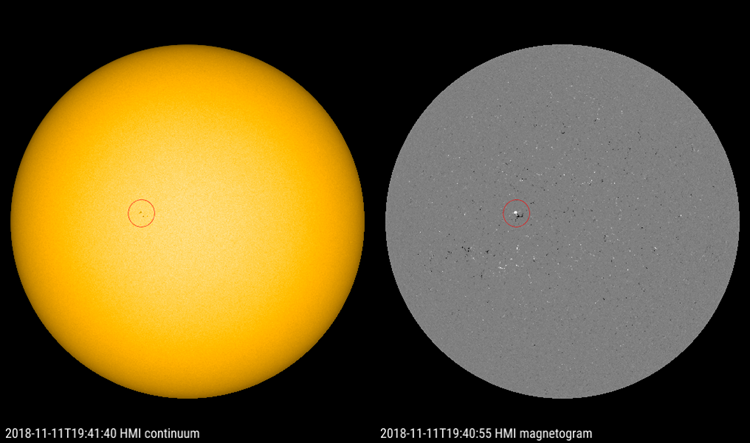
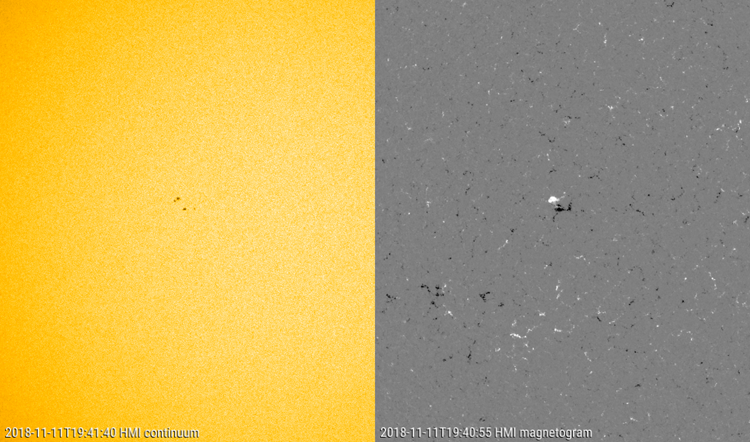
ESWW15

TO ALL 392 PARTICIPANTS: THANKS FOR BEING THERE!
Algeria 1 - Australia 2 - Austria 8 - Belgium 63 - Brazil 1 - Bulgaria 5 - Canada 3 - China 6 - Croatia 1 - Czech Republic 7 - Denmark 2 - Finland 7 - France 20 - Georgia 2 - Germany 27 - Greece 14 - Hungary 1 - Ireland 6 - Italy 26 - Japan 7 - Korea 2 - Lithuania 1 - Mexico 3 - Netherland 18 - New Zealand 2 - Norway 8 - Portugal 1 - Poland 7 - Romania 5 - Russian Federation 14 - South Africa 2 - Spain 9 - Sweden 5 - Switserland 3 - United Arab Emirates 1 - UK 57 - USA 44 - Venezuela 1
Check the contributions: http://www.stce.be/esww15/contributions/
Check space weather on November 6 and November 8: http://www.stce.be/esww15/liveforecast.php
Photos of the medal ceremony and conference dinner: http://www.stce.be/esww15/photos/index.php?collection=photos
We hope to welcome you also on ESWW2019.
PROBA2 Observations (5 Nov 2018 - 11 Nov 2018)
Solar Activity
Solar flare activity remained very low during the week.
In order to view the activity of this week in more detail, we suggest to go to the following website from which all the daily (normal and difference) movies can be accessed: http://proba2.oma.be/ssa
This page also lists the recorded flaring events.
A weekly overview movie can be found here (SWAP week 450): http://proba2.oma.be/swap/data/mpg/movies/weekly_movies/weekly_movie_2018_11_05.mp4
Details about some of this week's events, can be found further below.
If any of the linked movies are unavailable they can be found in the P2SC movie repository here: http://proba2.oma.be/swap/data/mpg/movies/
Friday Nov 09
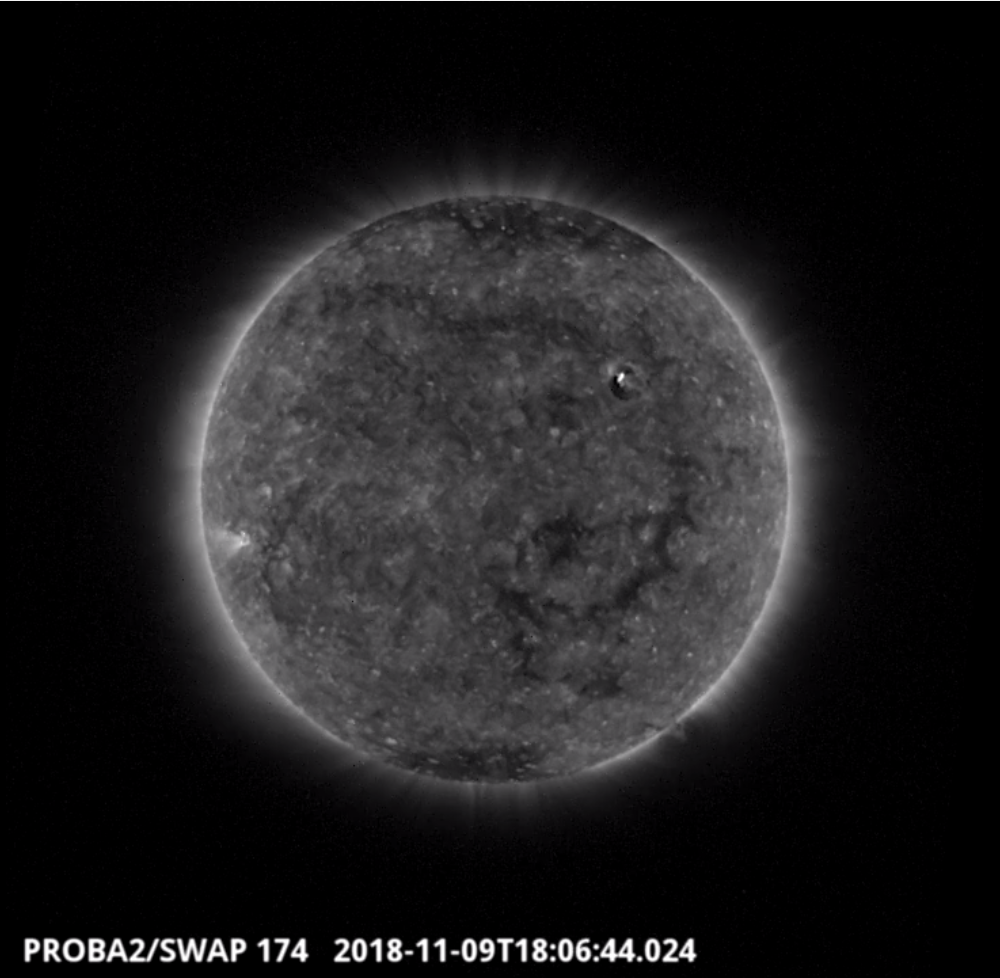
A small bright loop feature accompanied by a small transient dimming was observed by SWAP on 2018-Nov-09, visible in the north-west of the solar disk in the SWAP image above taken at 18:06 UT.
Find a movie of the event here (SWAP movie): http://proba2.oma.be/swap/data/mpg/movies/20181109_swap_movie.mp4
The SIDC space weather Briefing
The Space Weather Briefing presented by the forecaster on duty from November 5 to 11. It reflects in images and graphs what is written in the Solar and Geomagnetic Activity report.
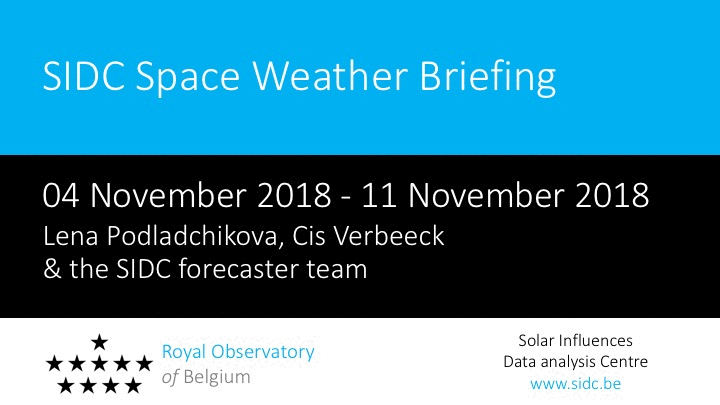
pdf-version: http://www.stce.be/briefings/20181112_SWbriefing.pdf
automatically running presentation: http://www.stce.be/briefings/20181112_SWbriefing.ppsm
The International Sunspot Number
The daily Estimated International Sunspot Number (EISN, red curve with shaded error) derived by a simplified method from real-time data from the worldwide SILSO network. It extends the official Sunspot Number from the full processing of the preceding month (green line). The plot shows the last 30 days (about one solar rotation). The horizontal blue line shows the current monthly average, while the green dots give the number of stations included in the calculation of the EISN for each day.
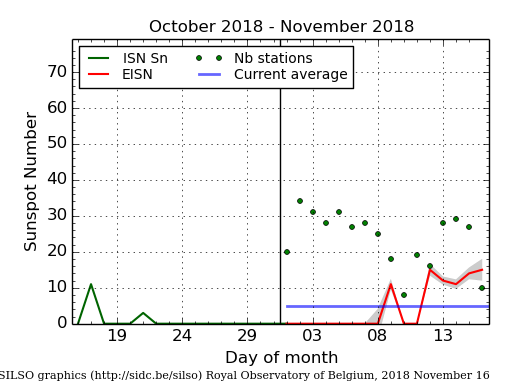
Review of ionospheric activity (5 Nov 2018 - 11 Nov 2018)
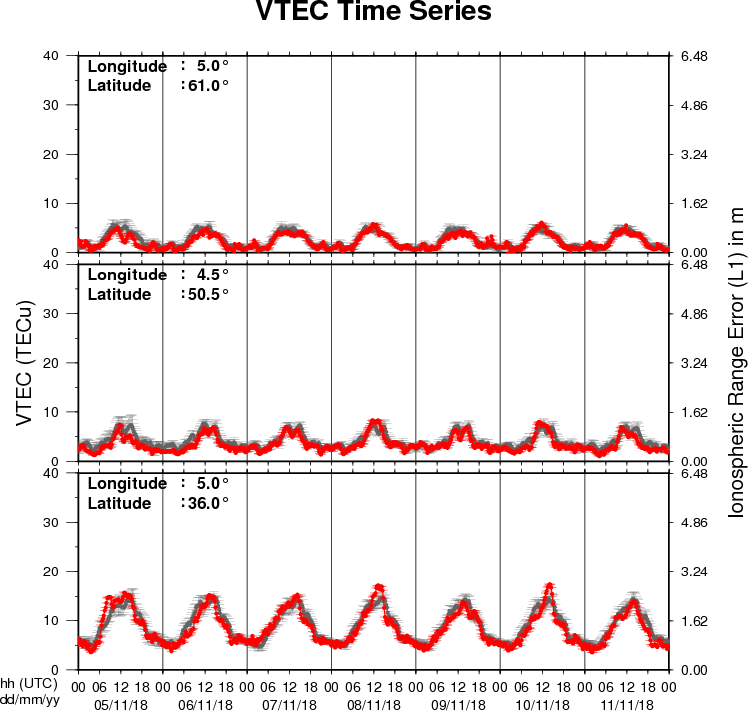
The figure shows the time evolution of the Vertical Total Electron Content (VTEC) (in red) during the last week at three locations:
a) in the northern part of Europe(N61°, 5°E)
b) above Brussels(N50.5°, 4.5°E)
c) in the southern part of Europe(N36°, 5°E)
This figure also shows (in grey) the normal ionospheric behaviour expected based on the median VTEC from the 15 previous days.
The VTEC is expressed in TECu (with TECu=10^16 electrons per square meter) and is directly related to the signal propagation delay due to the ionosphere (in figure: delay on GPS L1 frequency).
The Sun's radiation ionizes the Earth's upper atmosphere, the ionosphere, located from about 60km to 1000km above the Earth's surface.The ionization process in the ionosphere produces ions and free electrons. These electrons perturb the propagation of the GNSS (Global Navigation Satellite System) signals by inducing a so-called ionospheric delay.
See http://stce.be/newsletter/GNSS_final.pdf for some more explanations ; for detailed information, see http://gnss.be/ionosphere_tutorial.php
